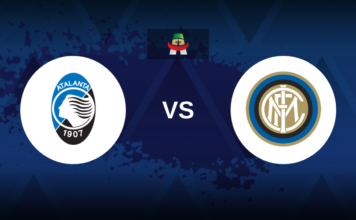After years of smart overachievement at Brentford, Thomas Frank takes on the biggest challenge of his career. But can his adaptable, pragmatic style thrive at a club with bigger expectations—and fewer excuses?
After seven impressive years at Brentford FC, Thomas Frank has finally landed one of the Premier League’s biggest jobs: managing Tottenham Hotspur. For many fans and pundits, it’s a move that’s been a long time coming. His work at Brentford—marked by tactical flexibility, smart squad development, and stable progression—earned him widespread respect. But while his time in West London was undeniably successful, much of the credit has often gone to Brentford’s off-field structure and data-led recruitment rather than Frank’s tactical brilliance alone.
In fact, ask the average Premier League fan to describe Frank’s coaching philosophy beyond well-drilled set pieces, and you might be met with silence. So now that he’s in charge at a club with bigger expectations and brighter spotlights, the question is simple: what will Thomas Frank’s Tottenham actually look like?
Tactical Adaptability: Frank’s Signature Style
The hallmark of Frank’s managerial career so far has been adaptability. At Brentford, he didn’t rigidly stick to a single formation or strategy. Instead, his teams comfortably shifted between back-three and back-four systems, often tailoring their approach depending on the opposition. When Brentford were promoted to the Premier League in 2021, Frank opted for a more pragmatic, defensively solid approach to ensure survival. He later described this as a necessary step to stay afloat, calling it a more “pragmatic” version of their game.
But once Brentford found their feet in the top flight, Frank introduced what he called “Brentford 2.0”—a more proactive, possession-based style aimed at gaining control of matches and creating chances through structured buildup and intelligent tempo changes.
The Brentford 2.0 Blueprint
The final iteration of Brentford 2.0, seen in the second half of the 2024–25 season, offers clear insight into what Spurs fans might expect. The system typically used a back four with a double pivot, and prioritized deep buildup play—moving the ball patiently along the back line, not simply to keep possession, but to buy time for teammates to create advantageous situations further upfield.
Once key attacking players had pulled defenders out of position—such as a striker dropping deep or a number 10 dragging a center-back—the team would shift gears, increasing the tempo to exploit space with direct runs from wingers and fullbacks. This calculated rhythm shift was essential to Brentford’s attack, allowing them to consistently break through lines despite lacking the raw talent of top-six squads.
Why This Fits Tottenham
This tactical DNA could actually suit Spurs quite well. The current Tottenham squad is already structured around a back four, and they have several players who can operate in a double pivot role. Frank also inherits attacking players capable of stretching play wide before making cutting inside runs or racing behind defensive lines.
The signing of Dominic Solanke—a striker who can either lead the line or drop deep to link play—is particularly well-suited to Frank’s preferred system. Meanwhile, the presence of Richarlison and Mathys Tel offers valuable depth and variation in attack.
Perhaps most crucially, James Maddison appears ready-made for the “Damsgaard role.” At Brentford, Mikkel Damsgaard was given a free role as a number 10—linking play, creating chances, and driving the tempo of attacks. Maddison, who operated similarly under Ange Postecoglou, looks ready to be the creative engine of Frank’s Spurs from day one.
The Potential Challenge Ahead
However, not everything about Frank’s Brentford 2.0 will translate perfectly. One key concern is that Brentford’s system often thrived because opponents allowed space to open up. As a mid-table team, Brentford were often given room to play because teams were willing to push up and take risks. At Spurs, it’s different.
With Tottenham expected to dominate games, particularly against weaker opponents, space may become a scarce resource. Frank’s approach depends on manipulating and attacking these spaces. If opponents sit deeper and refuse to open up—as they often do against top-six sides—his system could struggle to generate the same level of attacking threat.
We’ve seen this movie before. At Brighton, Roberto De Zerbi experienced a similar pattern. After a fantastic first season, teams adjusted by becoming more cautious, and Brighton dropped from 6th to 11th in the following campaign.
Evolution or Stagnation?
So while Thomas Frank’s appointment is likely to raise Spurs’ tactical floor, the real question is about their ceiling. Can Brentford 2.0 evolve into Tottenham 2.0? Will Frank find new solutions if space becomes scarce and opponents refuse to play ball?
Fortunately, history is on his side. At every stage of his managerial career so far, Frank has shown a remarkable ability to evolve. Now, at Tottenham, he’ll need to do it again—on a bigger stage, with higher expectations, and far less patience.
The puzzle pieces are there. Whether Frank can put them together quickly enough to deliver success at a club starving for silverware remains to be seen.







